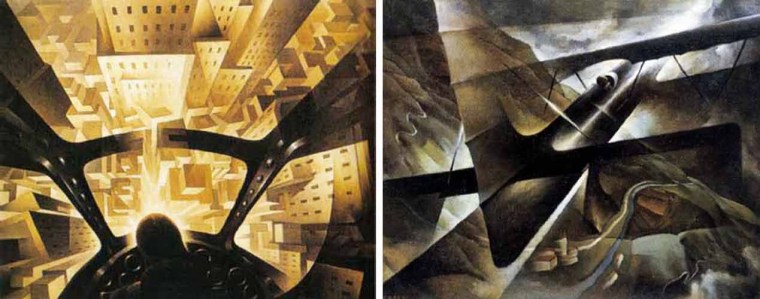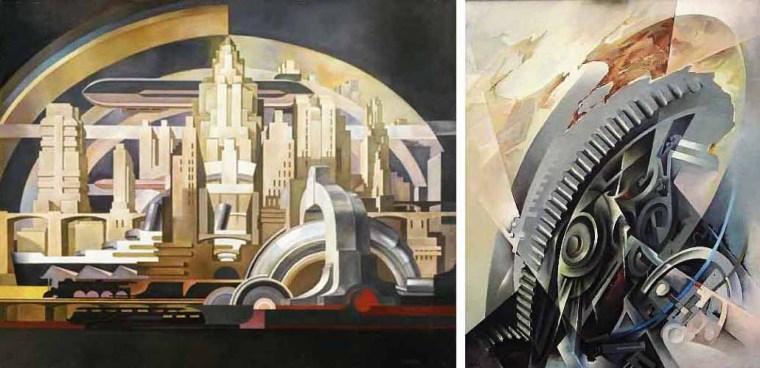[ aware ] of all the adverse, if i may, i want to show the fair of the accepted as the opposite by most. The beauty of audacity in men, of great ideas full of anger to succeed. Lifeful, will powered minds. Exited of work, creativity and struggle — “We will sing of great crowds excited by work, by pleasure, and by riot. We will sing of the multi-colored, polyphonic tides of revolution in the modem capitals, we will sing of the vibrant nightly fervor of arsenals and shipyards blazing with violent electric motors, greedy railway stations that devour smoke-plumed serpents, factories hung on clouds by the crooked lines of their smoke; bridges that stride the rivers like giant gymnasts, flashing in the sun with a glitter of knives; adventurous steamers that sniff the horizon: deep-chested locomotives whose wheels paw the tracks like the hooves of enormous steel horses bridled by tubing: and the sleek flight of planes whose propellers chatter in the wind like banners and seem to cheer like an enthusiastic crowd.” – Futurist Manifesto – “We will glorify war – the world’s only hygiene – militarism, patriotism, the destructive gesture of freedom-bringers, beautiful ideas worth dying for, and scorn for woman”. This might be charged with the most ideologically messed up and hair-rising words, yet — so ALIVE. //Excuse me for the long citations, these words are just too invigorating to be left behind//
So let me briefly introduce you the 2oth century beginning Futurist movement. Having its origin in Italy by the very beginning of the 20th century, also captured its place in Russia (even forming its own concept, the RUSSIAN FUTURISM – less militarism, more literature) and in other places. Was shown almost in every medium format (yes, even gastronomy). The founder of the movement and the ‘activator’ of the above mentioned manifesto was F. T. Marinetti, for general knowledge, it happened on February 5, 1909.
No connection to the past they wanted. Erase or ignore. Burn the libraries. No looking back for we have the ever-present speed. It is easy for me to see the place it came from. Despised political and social past, passive white-collars, i wish especially full to the brim with greedy liberals and ‘moneyed elite’. Despised the cult of the mystic and the shady. Holding up both WW1 and WW2 periods, despite the fact that the main ideas were associated with the fascist regime, the Futurist movement included both fascists, socialists and anarchists and such as the Italian form of Fascism often wasn’t true to itself and in my opinion in a constant search for their political belonging. They wanted to be the young and the strong, proud nationalists, exalted speed, industry, exciting aggression and violence, taking very active position, trying to awake in their own way — “Take up your pickaxes, your axes and hammers and wreck, wreck the venerable cities, pitilessly!”

"Speed of a Motorcycle" by Giacomo Balla, 1913; Sant'Elia, Boccioni, and Marinetti, 1914; Exhibition of the Fascist Revolution, 1933; Mussolini by Renato Bertelli, 1933
The dynamism of the technology was broadly expressed in paintings. Although the painting style wasn’t developed straight away and borrowed some means of light and forms breakage from CUBISM. Then everything was furiously blended into motion by intense lines, dynamic diagonals, broken surfaces, colorful fusion and disassembled, frozen movement as in long exposure photography. For me, the painting, of all other mediums, shows that the movement representors were a mirror of the horrifying modern reality they had the need to confront with, throwing up their impressions and impressures. Lots of different urban scenes and surrounding reality appear. In particular, notwithstanding arguments against it, reminding me of the 19th century ROMANTICISM perception of life just expressed in a whole dissimilar out loud way.
Futurists in music experimented with machinery sounds, acoustic noises, influenced electronic music and even some of our classics, such as Prokofiev and Stravinsky.
In architecture, the allegation was to create an efficient and centralized ‘machine’, a ‘living city’, an urban planning of the whole city and not just individual buildings. The absurd was that the city wasn’t supposed lo last and each generation could build their own, of course no allusion of sustainability here. Some very aesthetically interesting projects were created after the end of WW2, unfortunately too consumeristic, leaving social and environmental issues untouched, moreover, approaching to our resources as to an abstract illimitable substance, but this is clearly a separate issue.
The most notable architect associated directly to the Modernist movement was Antonio Sant’Elia. He talked about “heroic industrial expressionism” in architecture, masses and planes organized into ‘Città Nuova’ (“New City”), kind of an organism created of monolithic building, connected with bridges and ‘sky streets’. //related to the “Manifesto of Futurist Architecture” by Antonio Sant’Elia.

Antonio Sant'Elia (from PLATFORMA ARQUITECTURA - http://www.plataformaarquitectura.cl)
Another example of a Futurist architecture is shown by Vergilio Marchi. //related to the “Manifesto of Dynamic Instinctive Dramatic Futurist Architecture” by Virgilio Marchi.
In “Manifesto of Aerial Architecture” by Angiolo Mazzoni the above Lingotto factory was marked as the first futurist building. Having 5 floors, the upper one consisted of a test track for the manufactured cars and was the biggest car factory for that period of time. Definitely comprised a significant industrial sign for the era and influenced urban planning. Angiolo Mazzoni is related to the more functional side of the Futurist movement, in my opinion, accomplished very important and functionally exceptional projects (presenting the Futurist architecture in a very positive way, from this point of view), especially significant to the Fascist regime. Mostly known for his rail-way stations in Italy, he used flowing stream lines and continuous forms as to emphasize dynamics and speed of the Futurist principles. Used relatively modern materials, steel, glass and stone.
There is a wide continuation of the style itself, though the ideals went amiss. So beside the influence of the movement on architecture and in other fields, you can also discover reminders in nowadays transhumanism ideas, science fiction, japanese art works, cyberpunk and more. Thus even if the movement didn’t succeed to surpass the Roman Empire, as its exponents aimed, it surely did leave an imprint on our, as i like to term it, so called, continuous progression, history. In rare situations, the effort is worth the result. As for me, when one or a group ignores this fact — it is enheartening.







April 4th, 2013 at 9:43 am
Thank you for this informative summary on futurist architecture. I found your blog while looking for information on Lingotto in Turin. Great blog, I will return!
April 28th, 2013 at 10:16 am
Thank You for the feedback Stefanie